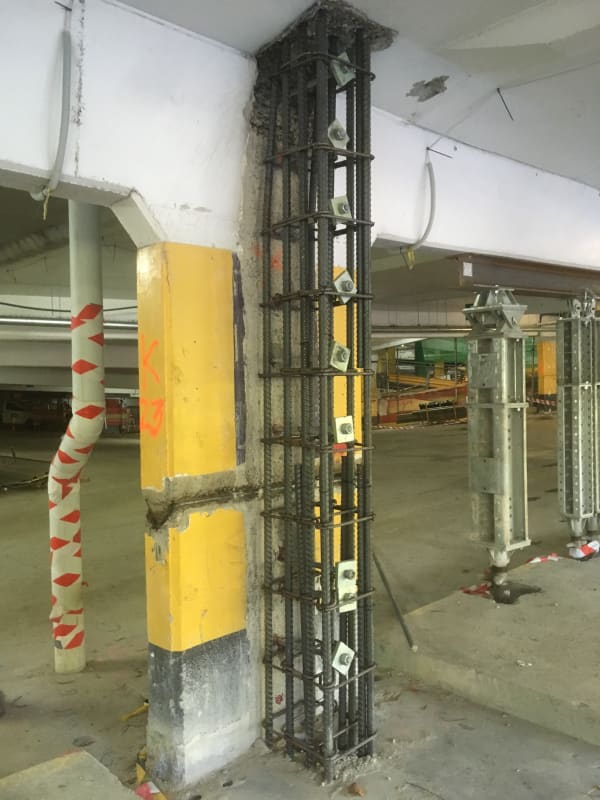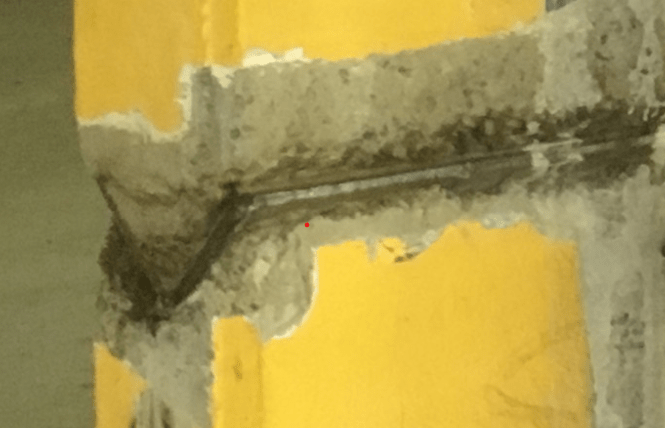Ingenuity
Structural
- May 17, 2001
- 2,374
We have a few bridge structures in my area with Freyssinet hinges and I have seen Mesnager hinges too, but I have never seen a V-joint in a slender RC blade column to a parking structure.

A closer-look at the V-joint:

Parking structure is located outside Sydney, Australia. Built early 70's - one of the earlier parking structures to one of Australia's first shopping malls.
I believe floor framing is prestressed beams in long direction, one-way slabs in transverse.
Interesting detail. Anyone seen one in the 'wild"?

A closer-look at the V-joint:

Parking structure is located outside Sydney, Australia. Built early 70's - one of the earlier parking structures to one of Australia's first shopping malls.
I believe floor framing is prestressed beams in long direction, one-way slabs in transverse.
Interesting detail. Anyone seen one in the 'wild"?
